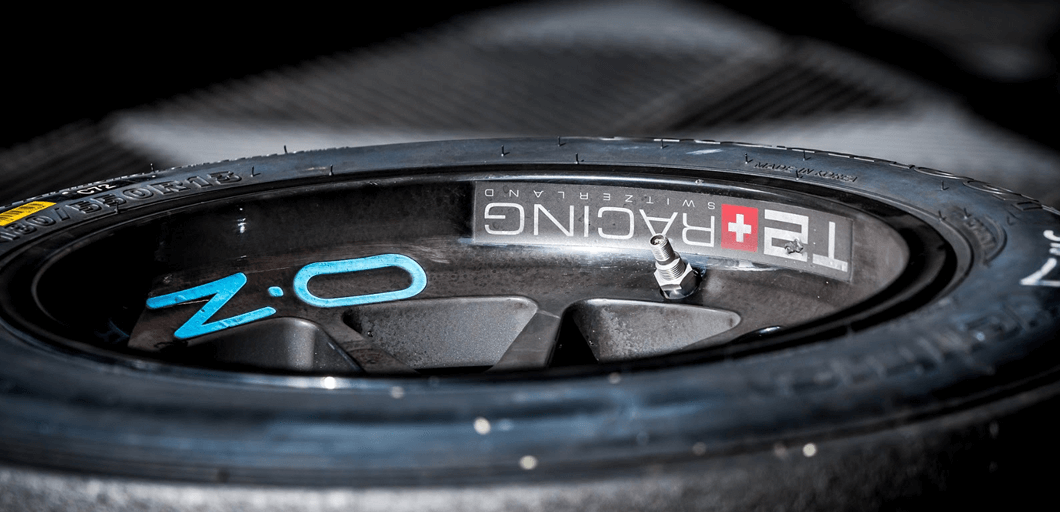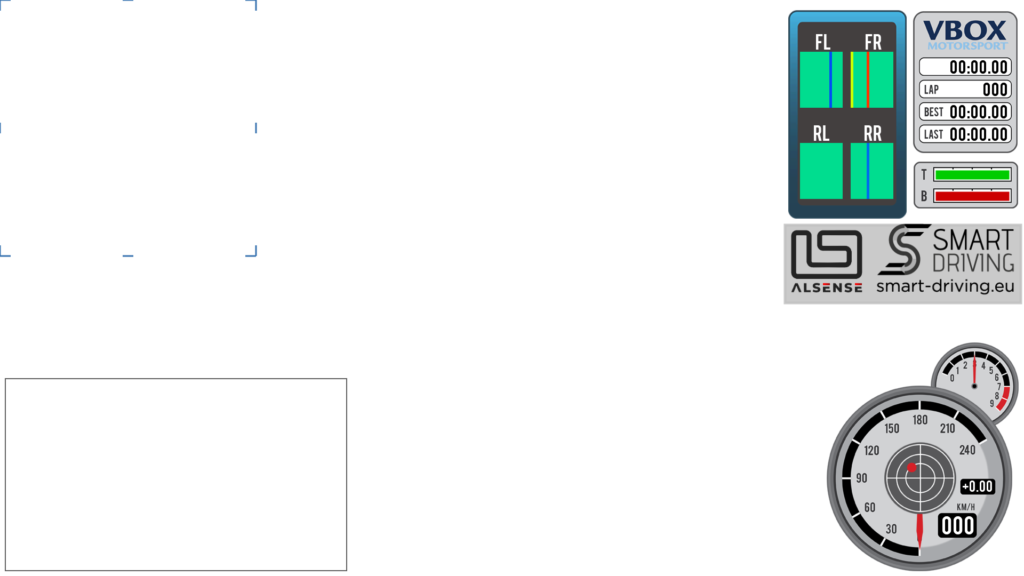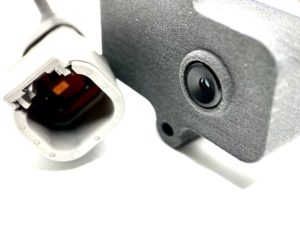Why monitor tire temperature?

Tire temperatures are a key aspect of vehicle performance, as the tire is the only contact point be-tween the vehicle and the track surface. They are key to fast lap times and predictable car handling. The amount of grip or adhesion a tire provides is directly influenced by its temperature and keeping this parameter it in the optimum range (usually specified by the tire manufacturer) yields the highest on-track performance and fastest lap times. Monitoring this is therefore crucial, and real-time data allows for better analysis and setup tuning. Using low-tech methods tire temperatures can only be measured when the car comes into the pits, but this poses several disadvantages. The rubber would have cooled down an uncertain amount, as the vehicle needs to slow down in the pit lane, and therefore the data provided is less relevant. Conventional methods only allow us to measure temperatures after the car has passed the last corner and after several seconds at low speed in the pits, but that leaves it free to interpretation about how the tire is used in the first sectors.
To better grasp why temperature is crucial to grip, we must look at the physical properties of rubber. Being a visco-elastic material, its modulus (the ratio between stress and strain) is high at low temperatures and low at high temperatures. Such materials are characterized by behaviors between that of viscous liquids and elastic solids. This means that cold tires are rigid and brittle, and hot tires are flexible and elastic. The optimum, however, lies somewhere in the middle, as the material is most viscous and able to deform in the intermediate temperature range. This allows sufficient movement in the polymer chains of which a tire is made out of.
However, another highly temperature dependent effect is hysteresis. In simple terms it means that molecules which make up a tire slow themselves down while moving, as they collide with each other, thus generating heat. As stress and deformation are out of phase in a tire – say when the outside tire is being loaded while taking a corner – it causes the material to retain its shape while forces are applied to it. This phase angle between applied force and movement is called hysteresis. A high hysteresis tire is preferable, as it can help sustain higher forces during cornering while still being able to retain adhesion, and prevents exaggerated deformation. In any given tire the zone of maximum hysteresis is between the rubbery and glassy states of the material, again meaning that there is an optimal temperature window to maxim-ise this effect.
Therefore, it is crucial to maintain a tire in its optimum temperature window, in order to maximize hysteresis and keep rubber in its most viscous state. Real-time monitoring gives an advantage out on track, as this can be done at all times – while braking, accelerating or cornering. The sixteen available channels which ALS Tire Wired / Pro monitors enable the efficient use of the entire contact patch, and suspension tuning becomes more intuitive as we know which areas of the surface to optimize.
Setup changes, such as increasing or decreasing camber and toe for example, can be used purposefully to either cool or heat parts of the thread which do not reach optimal temperatures. The conventional rule of thumb states that there should be no more than 7 degrees Celsius difference between the inside and outside of the tire surface. As a car’s wheels rely on negative camber, it is very common for the outside parts of the tire to be cooler in straight lines, and warm up more than the inside during cornering. Dampers and springs can also be adjusted or calibrated to ensure that all four corners of the car are loading up as intended while on track. It is therefore easy to experiment or validate vehicle dynamics with the help of ALS Tire Wired / Pro / BLE and a data logger.

Drivers can also make good use of the available data and learn how to better use lateral and longitudinal inputs to optimize lap time and manage tire life effectively. Overdriving at the beginning of a stint can drastically increase wear, thus shortening lifespan and providing less strategic flexibility during races. Fortunately, it is quite easy to notice as excess heat will be easily measurable using our system. Determining how hard you can push as a driver will also get reflected in the thread temperatures and driving style can be adjusted accordingly. It is crucial to understand if the full potential of the tire is using during all phases of a corner – from braking, to entry and to exit.

Compared to similar solutions on the market, Alsense offers enhanced capabilities at a considerably reduced price point, without sacrificing build quality or compatibility and offering a generous number of data channels available for analysis.









